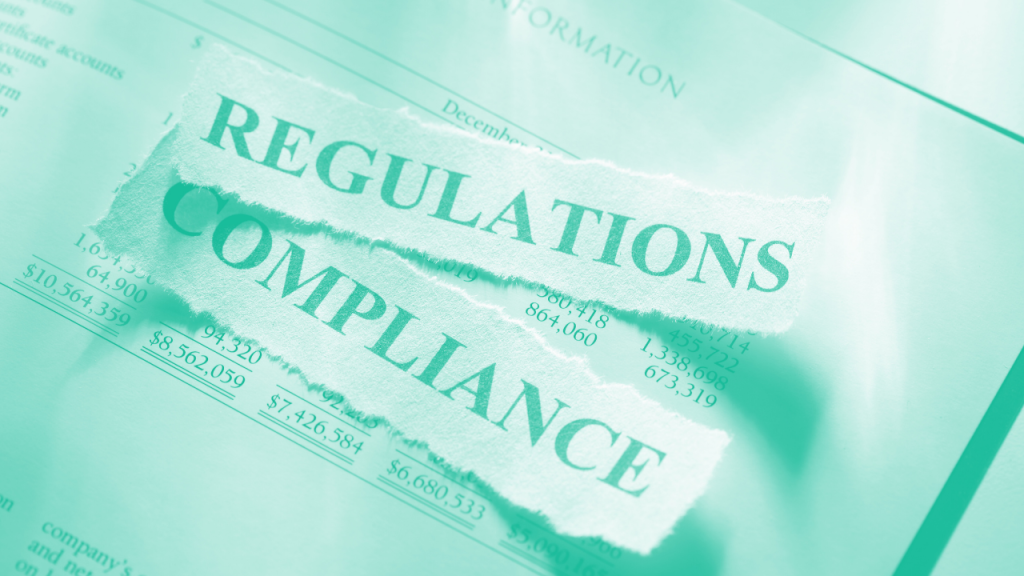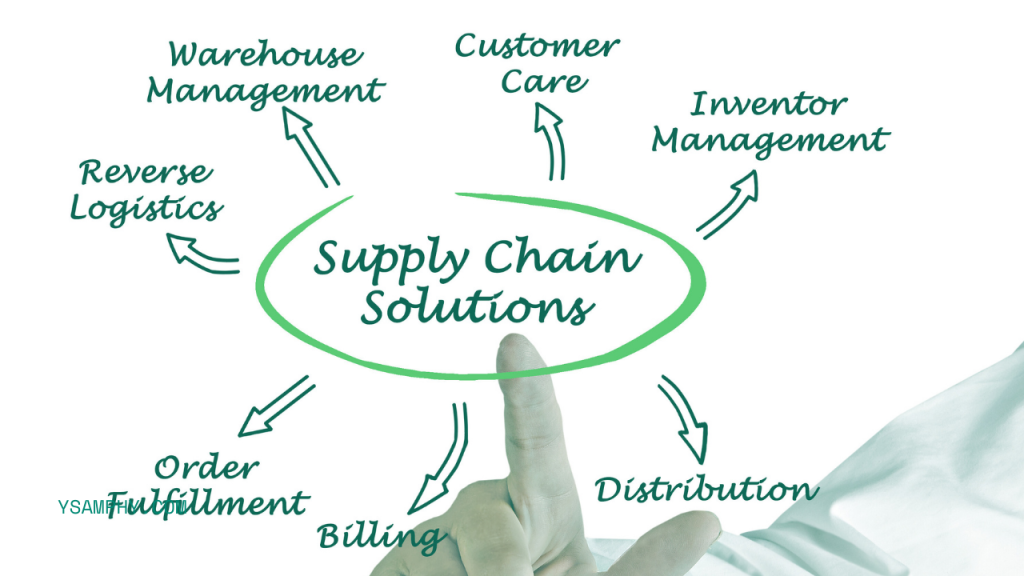Global supply chains are increasingly complex and interconnected. Ensuring their security is crucial. Organizations must protect supply chains from cyber-attacks, data breaches, and physical disruptions. Platforms like evidentid.com offer solutions to safeguard business continuity and maintain trust with partners and customers.
Supply chain vulnerabilities can stem from various sources, such as weak links in the network, insufficient data protection, and inadequate risk management strategies. To combat these challenges, it is essential to implement robust and proactive security measures. These steps can help companies stay resilient against potential threats and ensure smooth operations across their supply chains.
Best practices for enhancing supply chain security include adopting advanced technical solutions, following industry standards, and developing comprehensive risk management strategies. By focusing on these areas, companies can significantly reduce their exposure to threats and secure their supply chains effectively.
Key Takeaways
- Supply chains must be secured against diverse threats.
- Implement proactive security measures and robust technical solutions.
- Follow industry standards to ensure effective supply chain management.

Understanding Supply Chain Security
Supply chain security is crucial for safeguarding business operations. It involves identifying vulnerabilities, maintaining cybersecurity, and understanding evolving threats.
Identifying Potential Vulnerabilities
Identifying vulnerabilities within a supply chain requires careful analysis. Weak links often exist in third-party vendors and partners. Data breaches can arise from unsecured networks or poor data handling practices.
Physically, supply chains can be disrupted by natural disasters or theft. In software, poorly secured CI/CD pipelines allow hackers to exploit weaknesses. Regular audits and risk assessments can help identify and mitigate these vulnerabilities.
The Impact of Cybersecurity on Supply Chain Integrity
Cybersecurity directly influences the integrity and reliability of supply chains. Cyber threats like malware and ransomware can halt operations, leading to significant losses.
I maintain strong network security measures, including firewalls and intrusion detection systems, to safeguard sensitive data. Encrypting data in transit and at rest protects against unauthorized access. Additionally, training employees on security practices helps minimize risks from human error.
Evolving Threat Landscape and its Implications
The threat landscape is continually evolving, making supply chain security a moving target. New attack vectors emerge as technology advances. For example, as organizations adopt IoT, the number of entry points for attackers grows.
I monitor emerging threats and adopt best practices to stay ahead. Collaboration with industry partners and participating in threat intelligence sharing improves resilience. By understanding and adapting to these changes, I can better protect the supply chain from future risks.

Industry Standards and Regulatory Frameworks
Ensuring supply chain security involves adhering to various industry standards and regulatory frameworks. These guidelines enhance cybersecurity measures and compliance, essential for organizations worldwide.
Aligning with NIST Guidelines and EO Compliance
To enhance supply chain security, I follow the National Institute of Standards and Technology (NIST) guidelines. NIST’s SP 800-161, Rev. 1 outlines Cybersecurity Supply Chain Risk Management Practices. These standards provide a comprehensive approach to managing supply chain risks.
Additionally, Executive Order (EO) 14028 directs federal agencies to tighten cybersecurity. I ensure compliance by integrating security requirements in acquisition processes. This alignment with NIST and EO protocols helps in mitigating potential cybersecurity vulnerabilities throughout the supply chain.
Adhering to Global Supply Chain Security Standards
Global supply chain security standards are pivotal in maintaining an international safety net. Implementing ISO/IEC 27001 and ISO 28000 standards ensures robust information security management and supply chain security.
These standards provide a structured approach to risk management. By adhering to them, I can establish measures that protect information and physical assets. This adherence strengthens global supply chain integrity and helps prevent disruptions caused by cyber threats.
Establishing a Multifaceted Approach to Supply Chain Security
A multifaceted approach combines different strategies to enhance supply chain security. I integrate physical security controls with cybersecurity measures to create a comprehensive defense system.
Collaboration with suppliers ensures that security practices are uniformly applied. Regular audits and assessments help identify and mitigate risks promptly. By taking these steps, I maintain a secure and resilient supply chain that can adapt to evolving threats.

Strategic Best Practices for Secure Supply Chain Management
Enhancing supply chain security involves tactical planning and execution. This includes developing strong incident response and recovery processes, ensuring transparency and provenance, and conducting regular risk assessments.
Implementing Robust Incident Response and Recovery Processes
A well-prepared incident response plan is essential. First, I ensure that my plan outlines specific steps for identifying, analyzing, and mitigating security breaches.
Key actions:
- Establish a dedicated incident response team.
- Develop a communication protocol to alert stakeholders.
- Implement recovery strategies that prioritize critical systems.
Employing tools like Intrusion Detection Systems (IDS) and Security Information and Event Management (SIEM) systems helps in early detection and efficient response. Regularly testing these processes ensures they’re ready when real incidents occur.
Maintaining Transparency and Provenance in Supply Chains
Transparency helps in tracking the origin and movement of products. I adopt technologies such as blockchain to enhance data integrity and provide real-time visibility.
Steps to improve transparency:
- Use Blockchain for secure, tamper-proof records.
- Implement barcodes and RFID tags for tracking.
- Share documented practices with stakeholders.
Provenance verifies the origin of materials. I insist on collecting and maintaining detailed records from my suppliers. This includes certifications, which are verified through third-party audits.
Mitigating Risks through Regular Assessments and Security Measures
Regular risk assessments identify vulnerabilities. I conduct these assessments frequently, focusing on both physical and cyber threats.
Risk mitigation practices:
- Perform vulnerability scans and penetration tests.
- Update security protocols based on assessment findings.
- Train employees on recognizing and responding to security threats.
Security measures like encrypting sensitive data, physical security at warehouses, and multi-factor authentication for system access are integral. Continuous monitoring and adapting to new threats ensure the supply chain remains resilient.

Technical Solutions for Enhancing Supply Chain Security
Implementing technical solutions can greatly fortify supply chains against various threats. Key strategies include using automation for security, advanced data protection methods, and blockchain technology.
Leveraging Automation to Ensure Security
Automation plays a significant role in maintaining supply chain security. By automating repetitive tasks, like vulnerability scanning and patch management, we can reduce human error and increase efficiency.
Automated tools can also help in monitoring and managing Software Bills of Materials (SBOM). These tools track components used in the software, ensuring that vulnerabilities are quickly identified and addressed.
Additionally, integrating automated systems for end-to-end tracking ensures real-time data collection, which allows for rapid response to any security incidents.
Integrating Advanced Data Protection Methods
Securing data within the supply chain is essential. Advanced encryption methods and data protection protocols are critical to safeguarding sensitive information.
Encryption protects data both at rest and in motion, making it harder for unauthorized parties to access or tamper with critical information. Implementing strong encryption standards ensures that data remains confidential and intact.
Apart from encryption, employing tools for robust access control and monitoring can significantly mitigate risks. These tools ensure that only authorized personnel can access sensitive data, and any suspicious activity is promptly detected.
Utilizing Blockchain Technology to Secure Supply Chains
Blockchain technology offers an innovative way to secure supply chains. By creating an immutable ledger of transactions, blockchain ensures transparency and traceability throughout the supply chain.
Each transaction recorded on the blockchain is encrypted and linked to the previous one, making it extremely difficult for anyone to alter the data without detection.
Blockchain can also enhance the integrity of SBOM by providing a transparent record of software components and their origins. This ensures any vulnerabilities are promptly identified and addressed, maintaining the overall security and reliability of the supply chain.

